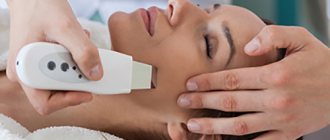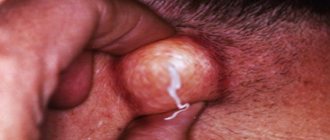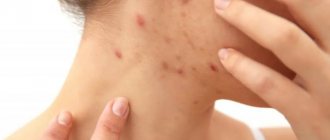Laser hair removal is a popular cosmetic procedure for removing body hair. After it, the skin becomes smooth, silky and pleasant to the touch. However, hair removal results do not always live up to expectations. Skin defects may occur that are very difficult to get rid of. Therefore, before carrying out the procedure, you should definitely familiarize yourself with the potential risks.
Contraindications for hair removal
Laser hair removal is accompanied by exposure of the skin surface to light rays. The principle of operation of the device is as follows: a stream of light reaches the bulb and blood vessels, promoting their heating and subsequent death. Therefore, the follicles are destroyed and hair growth stops in the treated area.
A repeated laser hair removal procedure, which is carried out after 25-30 days, removes the remaining hairs that were previously in a state of sleep. After 10 sessions of such manipulation, the follicles become completely incapacitated.
All light devices are accompanied by instructions for use, which detail diseases that are a contraindication to the procedure.
Laser hair removal is prohibited in the following cases:
- Neoplasms of any origin.
- Low immunity associated with severe pathologies.
- Allergies are in the acute stage.
- Any skin diseases, especially infectious ones.
- Diabetes mellitus.
- Varicose veins and spider veins.
It is also worth holding off on this procedure if the client has at least one of the following conditions:
- The period of bearing a child and breastfeeding.
- Hormonal imbalance.
- Infection with viruses and various infections.
- Inflammatory processes on the skin in the area of intended hair removal.
- Flu, cold.
- Damage to the skin - wounds, cuts, scratches.
Causes of acne after hair removal
The problem of acne is very common. Experts identify several reasons for their occurrence. Among them:
- Hormonal disbalance.
- Ingrown hair.
- Infection.
The problem of hormonal imbalance mainly affects young girls. The rash appears on the face and bikini area. In these places, the sebaceous glands secrete subcutaneous fat in such quantities that it cannot completely come out and accumulates under the skin. As a result, isolated ulcers and rashes form on it. This process can be prevented by maintaining personal hygiene and controlling your diet.
Ingrown hairs cannot escape through the skin. This leads to clogging of the sebaceous glands and the subsequent occurrence of acne.
Infections occur when hair is removed with contaminated objects. Therefore, using other people's razors or epilators is highly discouraged. The best way to protect yourself from negative consequences is to use individual hair removal products.
Also, the causes of acne after hair removal include allergic reactions. Allergy rashes appear on any part of the body and can cover the entire area where the hair was removed. Standard irritants are considered to be a razor, which removes the top layer of skin, and an epilator, which plucks the hair at the very base.
Allergies can also occur in case of individual intolerance to the components. For example, with the cosmetic method of hair removal with wax. Also, acne can be triggered by soothing creams or skin care products.
Consequences of laser hair removal
Even in the absence of contraindications, no one is immune from the development of side effects. As a rule, they arise as a result of:
- Poor preparation of the skin for light exposure.
- The specialist made a mistake in diagnosing the patient.
- Presence of one of the contraindications. Many people may not fully know their illnesses.
- The functions of the device are incorrectly configured, prolonged exposure to a certain area of the skin.
- Individual intolerance to laser manipulation.
The main consequences after hair removal using light equipment are:
- Burns.
- Black dots.
- Pimples.
- Itching and irritation.
- Pigmentation.
- Folliculitis.
- Bruises.
Preventive measures
A similar manifestation of irritation occurs most often when performing wax depilation at home, so attention should be paid to the features of the technology. This way you can prevent the occurrence of ulcers.
So, what can you do to prevent skin irritation after waxing?
- Before and after the procedure, treat the bikini area with a disinfectant solution of Chlorhexidine.
- To blunt the reaction of nerve endings, you can apply a local anesthetic before waxing. It will also reduce inflammation associated with the removal of hair follicles.
- After the procedure, wear only cotton, clean underwear. Synthetics can only provoke acne.
- Before applying wax to the skin, be sure to sprinkle it with talcum powder.
- Epilate one area no more than three times. Otherwise, the risk of damage increases significantly.
- Follow the recommended direction for applying the wax. You need to apply it according to hair growth, and rip it off against it.
Also, 20-30 minutes after the procedure, apply a soothing lotion or cream to the bikini area. It will help relieve inflammation and speed up the recovery of damaged epithelial cells.
Keep in mind that wax depilation is not a universal technique, so it is not suitable for all girls.
Itching and irritation
Slight skin tightness, burning and discomfort are normal immediately after the procedure. Therefore, at the end of the session, the cosmetologist applies soothing agents to the skin. However, the persistence of unpleasant sensations in the form of itching and irritation for more than 2-3 days after hair removal indicates intolerance to the procedure. In such a situation, it is important to carefully care for your skin; you should exclude aggressive cosmetics and use only emollients. Decoctions of medicinal plants are useful - chamomile, calendula, sage, aloe vera. They soothe the epidermis, relieve inflammation and itching.
How to eliminate rashes after depilation
Irritation on the skin after waxing, expressed in the form of small purulent pimples, can not only cause discomfort, itching or even pain, but also increase the risk of developing serious inflammatory processes. Because of this, recovery measures should be started immediately after the first signs are detected.
Most often, basic recommendations are used to rehabilitate the skin after waxing, including treating the affected area with an antiseptic, applying a soothing lotion, etc. But to eliminate ulcers, additional means or traditional methods should be used.
Traditional methods
If small and mildly expressed pimples appear after waxing, they can be eliminated using folk methods. They are absolutely safe for girls, but they help to gradually normalize the condition of sensitive skin.
Most often, dermatologists recommend using the following soothing folk recipes:
- Mask made from aloe pulp or juice;
- Herbal lotions. You can use any pharmaceutical herbs for this - chamomile, calendula, hawthorn, nettle, string;
- Iodine mesh. An iodine solution will help dry out inflammation, accelerating the disappearance of pimples;
- Lotions with essential oils (tea tree oil works most effectively).
The more careful you are with the affected area, the faster the ulcers will disappear. They cannot be opened, otherwise there is a risk of infection entering the body through an open wound.
Use of medications
Medications also effectively combat pimples that occur after depilation. It is recommended to use them only after consultation with a dermatologist, since the composition of some antibiotics can lead to the opposite effect, increasing inflammation.
To treat such inflammation, you can use the following:
- Healing preparations - Bepanten, Panthenol and their analogues. They also help restore the skin after a thermal burn caused by using overheated wax;
- Disinfecting compounds – Salicylic acid, Miramistin;
- Antibiotic ointments – Sintomycin, Levomekol;
- Creams for removing acne on the face - Zinerit, Lotseril.
Additionally, the damaged area should be treated with any disinfectant solution 3-4 times daily. You can use Chlorhexidine or regular hydrogen peroxide for this.
If the cause of such inflammation is an allergic reaction to wax or other compounds used during the procedure, appropriate medications should be used. Also, if you have problems with hormones, you won’t be able to eliminate the ulcers on your own.
Prevention measures
If you are afraid to carry out certain hair removal procedures, then in fact you just need to adhere to the standards of care and carry out hair removal procedures correctly:
- mandatory treatment of the epidermis with antiseptics (to remove bacteria from the surface of the skin);
- the use of protective disposable gloves during the procedure (to prevent contact between the master’s hands and the client’s body);
- when using a razor, it is extremely important to control the quality and degree of sharpening of the blades, to shave clearly along and not against the hair growth;
- Before the procedure, the skin should be steamed before the hairs are pulled out, and then rinsed at the end of the procedure (this will reduce pain and subsequent narrowing of clean damaged pores);
- moisturizing the skin after the procedure is mandatory;
- correct choice of clothing (which eliminates rubbing of the treated areas of the body).
The basic rule that everyone must know: for several days after the procedure, you must categorically refuse baths and visits to the sauna and pool. During this time, all the smallest wounds will heal.
Frequently asked questions and their answers
After sugaring, purulent pimples appeared, from a mechanical epilator and shaving never happened, what is the reason?
If pimples appeared after sugaring and were not observed from other procedures, this particular method may not be suitable for you.
Why did pustules appear in an intimate place, although I did not change the hair removal technique and acne had not occurred before?
There may be an infection, you should visit a doctor.
I had difficulty getting rid of acne after waxing and now I’m afraid of any procedures, what if the abscesses appear again, what should I do?
Try the epilator cream for now, the risk of acne from it is minimal.
Instead of a scrub, you can do peeling; products intended for the treatment of acne and pimples are suitable for this.
What precautions should be taken?
To prevent pustules from appearing after depilation, you must follow the following tips:
- Always before and after hair removal, treat the skin with some kind of antiseptic (for example, Miramistin, it is not expensive and will always come in handy in the family first aid kit) - this will significantly reduce the number of microbes on the treated area of skin.
- If you do hair removal at home, always disinfect your hands before the procedure (antibacterial soap and an alcohol-containing solution are suitable). If you go to a beauty salon for hair removal, make sure that the technician wears gloves (by the way, they should be disposable and not left over from a previous client!).
- Before epilation, steam your skin - this will reduce the risk of microtrauma.
- Use only clean and high-quality tools! If you use tweezers, then before the procedure, disinfect it in an alcohol-containing solution, or in the same Miramistin.
- When shaving with a razor or removing hairs with an epilator, do not run the tool over one area several times: you may injure the top layer of skin.
- After hair removal, avoid baths, swimming pools and saunas for a while - public places with an ideal environment for picking up “foreign” germs.”
- Choose comfortable clothes. Tight synthetic items can rub the skin in the areas where hair removal was performed. As a result, this will lead to inflammation and the same purulent pimples.
- After epilation, gently scrub the skin about once every 3 days, this will help reduce the likelihood of ingrown hairs, and with them, purulent pimples.
- After epilation, use emollient creams and sprays. If such products cause allergies or pimples, try switching to natural products - tea tree oil or avocado oil.
Do you agree that it is not difficult to fulfill these requirements? You just have to approach depilation more responsibly, and purulent pimples will stop bothering you. What should you do if acne appears after depilation, despite all the precautions taken? First, cure them. And secondly, try a different hair removal method next time.











